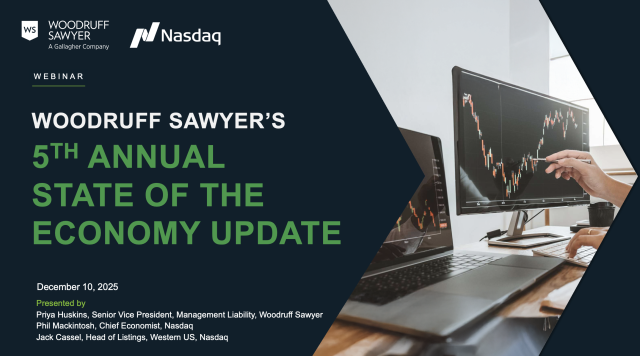Blog
Betwixt and Between: How Trustees Can Navigate a Volatile Market
Get critical guidance for trustees to handle volatile market conditions.
So far, 2022 has been a rough year for portfolio management. The war in Ukraine, China’s zero tolerance for COVID-19, 40-year inflation highs, and rising interest rates have created significant market volatility.
With the S&P 2022 year-to-date returns down roughly 12%, the Dow down about 9%, and bonds down 12%, investors have some difficult choices to make.
Conventional wisdom suggests that investors stay the course with a long-term investment outlook that removes emotion from investing decisions. However, staying the course is one thing when someone is investing their own money. It can be quite another thing for a trustee who has a fiduciary duty of care to manage assets on behalf of beneficiaries.
This article offers some guidance for trustees during these volatile financial times.

What are the standards for measuring a trustee?
The courts hold trustees, as fiduciaries, to the highest legal standard. Given the responsibilities that fiduciaries must fulfill, there are various grounds for filing a lawsuit against a trustee. Negligence that amounts to a breach of their fiduciary duty is one of these reasons.
Most trust instruments outline acceptable investments, and investment professionals generally create a well-thought-out investment statement. If a trustee follows these principles, they are typically defendable in the event of a claim.
But what are the standards for measuring the work of the trustee?
The Uniform Prudent Investor Act
One standard of measure is the Uniform Prudent Investor Act (UPIA) of 1992, which codifies the Prudent Investor Rule. The Prudent Investor Rule requires fiduciaries to invest trust assets as if they were their own, avoiding investments that pose excessive risks.
The UPIA allows for the trustee to consider the overall portfolio and expands the universe of investments that comply with the suitability standard. The UPIA, which the American Bar Association approved in 1995, includes a comprehensive set of rules for trustees to follow with respect to the following:
- Risk and return
- Impacts of inflation or deflation
- Overall economic environment
- Beneficiaries’ needs
- Potential tax implications
- Liquidity, income, and preservation of existing capital
The Kodak Case
Some court cases have tested these standards. While the Kodak case—a 2014 settlement—may seem like ancient history, it is worth reviewing considering in today’s volatile market.
In the Kodak case, the trust instrument outlined the grantor’s desire to maintain a large block of Kodak stock rather than develop a diversified stock portfolio. For the trustee, this preference was in direct conflict with the Prudent Investor Rule that was in place at the time.
Founded in 1958, the trust in this case held large holdings of Kodak stock. The trustee (Chase Manhattan Bank) maintained these holdings despite a steep drop in the value of the stock and did not reduce the concentration of Kodak stock until late 2001.
The fundamental question for the court in the litigation that developed was whether the trustee should have followed the grantor’s wishes when it was clear the underlying asset was depreciating. Another factor that was part of the litigation was that the investment trustee liquidated stock in some trusts but not all of them.
How should trustees respond to these changing standards?
The takeaway here is that a trustee must keep up to date with sometimes conflicting and frequently changing standards. In a volatile environment like the one we have today, a trustee’s decisions might not be clear cut.
Here are four essential risk management practices for trustees to perform.
- Balance: The challenge for a trustee is to balance the trust’s investment guidelines with the liquidity required for distributions to beneficiaries. Beneficiaries may be struggling under personal financial constraints, and it is a trustee’s duty to stay informed about a beneficiary’s circumstances.
- Review: To navigate these uncertain times, trustees must regularly review the performance of the investment managers to ensure they are following the investment statements.
- Document: Any deviations must be thoroughly investigated, and all decisions need to be documented in writing. If the assets are invested in funds, the trustee must make sure the funds have not strayed from the original investment strategies outlined in the prospectus and that no investment-style creep to manage poor performance has taken place. A strong paper trail will support the trustee in the event of a claim. Clear records help support the actions of the trustee and that the actions were communicated and understood by the beneficiaries.
- Communicate: Inevitably in this market there will be down quarters. The best risk management practices to manage beneficiary expectations include clear, consistent, and frequent communication. Consider developing a beneficiary education program that helps beneficiaries understand the decision-making process and helps create consensus and collaboration.
Trustee E&O Insurance Offers Peace of Mind
The goal of these risk management strategies is to first avoid a claim and then to help defend the trustee in the event of a claim. Insurance can provide another significant layer of protection.
Trustee Errors and Omissions (E&O) insurance helps protect a trustee from lawsuits regarding the professional handling and management of individual trusts. It can help provide quality defense counsel if the trustee does not have an expert trust and estate defense counsel.
This type of coverage also can provide an advance for legal expenses. Without Trustee E&O insurance, a trustee would have to pay their legal costs out of pocket.
To learn more about insurance options for trustees and the valuable peace of mind they offer, please reach out to one of the experts at Woodruff Sawyer.
Table of Contents










